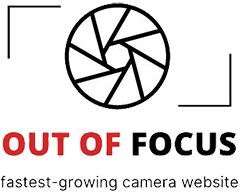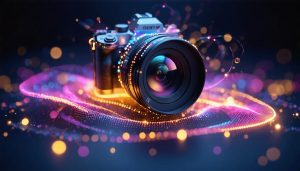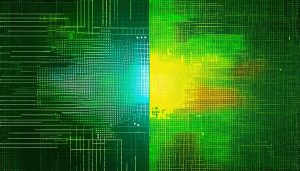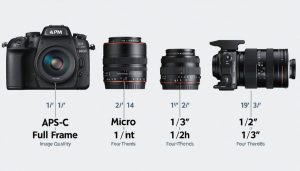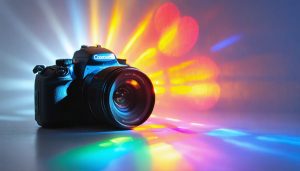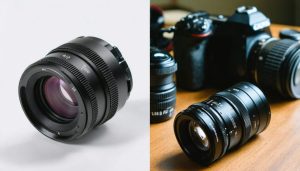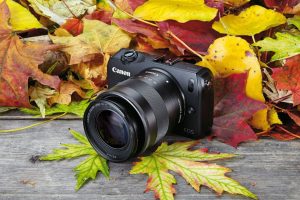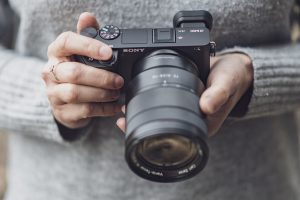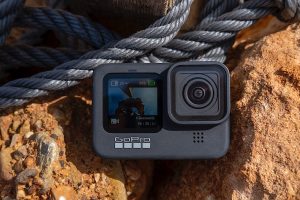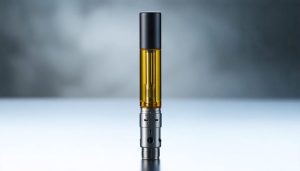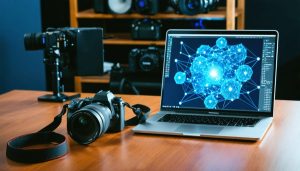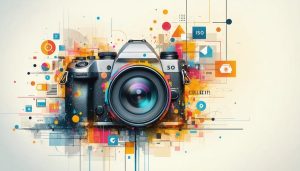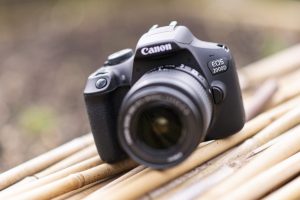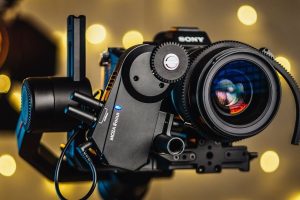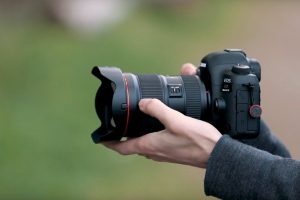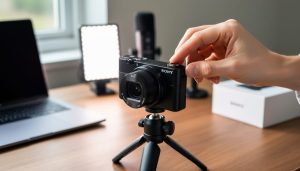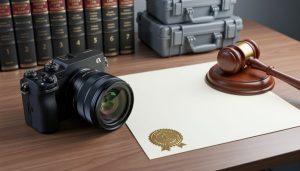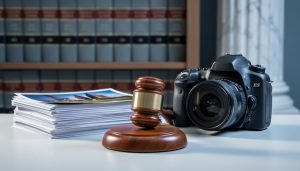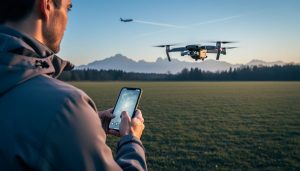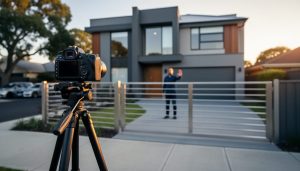AI-powered PTZ cameras are revolutionizing video surveillance and content creation with their ability to autonomously track and follow subjects without human intervention. These intelligent cameras combine advanced computer vision algorithms with smooth pan-tilt-zoom mechanics to deliver unprecedented automated tracking capabilities in real-time.
Imagine a camera that not only follows your movement across a stage during a presentation but anticipates your next position, maintaining perfect framing and focus throughout. That’s exactly what AI auto-tracking PTZ cameras deliver, whether you’re broadcasting a church service, conducting remote learning sessions, or securing a warehouse facility.
Unlike traditional fixed cameras or basic motion tracking systems, these sophisticated devices use deep learning algorithms to distinguish between different subjects, understand complex movement patterns, and make split-second decisions about tracking priorities. They can differentiate between people, vehicles, and other objects, maintaining focus on the intended target even in challenging conditions or crowded environments.
For content creators, educators, security professionals, and event managers, AI auto tracking PTZ cameras represent a significant leap forward in automated video production and surveillance technology. These systems effectively eliminate the need for dedicated camera operators while delivering professional-grade tracking and framing capabilities.
How AI Auto-Tracking PTZ Cameras Work
AI Motion Detection and Subject Recognition
At the heart of modern PTZ cameras lies sophisticated AI-powered autofocus systems that make subject tracking feel almost magical. These cameras use deep learning algorithms trained on millions of images to recognize and differentiate between various subjects, from people and vehicles to animals and inanimate objects.
The process begins with real-time scene analysis, where the camera’s AI processor continuously scans the entire field of view. When a subject enters the frame, the system first identifies the type of subject using pattern recognition. For instance, it can distinguish human shapes by analyzing characteristic features like head position, body proportions, and movement patterns.
Once a subject is identified, the camera creates what’s called a “subject profile” – a unique digital signature that helps maintain tracking even when the subject temporarily moves behind obstacles or changes position. The AI continuously updates this profile multiple times per second, adjusting for changes in lighting, distance, and angle.
What makes these systems particularly impressive is their ability to maintain focus on the intended subject even in challenging conditions. The camera uses predictive algorithms to anticipate subject movement, allowing it to respond quickly to sudden changes in direction or speed. This is especially useful in scenarios like sports photography or security surveillance, where subjects rarely move in predictable patterns.
The system also employs priority recognition, meaning it can be programmed to favor certain types of subjects over others, ensuring the camera remains locked on the most important element in the scene.
Pan-Tilt-Zoom Mechanics
The mechanical foundation of AI auto-tracking PTZ cameras combines precision engineering with intelligent control systems. At its core, the camera utilizes three primary movement axes: pan (horizontal rotation), tilt (vertical movement), and zoom (focal length adjustment). These movements are powered by sophisticated servo autofocus technology and high-precision motors that respond to AI-generated commands in real-time.
The pan mechanism typically offers 360-degree rotation capability, allowing seamless tracking of subjects moving in any direction. The tilt system usually provides between 90 to 180 degrees of vertical movement, ensuring comprehensive coverage from floor to ceiling. Both movements are precisely controlled through belt-driven or direct-drive systems, offering smooth, silent operation crucial for professional environments.
The zoom component integrates both optical and digital zoom capabilities, working in harmony with the AI tracking system to maintain optimal subject framing. Modern PTZ cameras feature enhanced motor response times, typically achieving complete pan movements in under two seconds, while maintaining accurate focus through advanced image processing algorithms.
What makes these mechanics truly remarkable is their ability to coordinate multiple movements simultaneously. When tracking a subject, the camera can smoothly pan, tilt, and zoom all at once, creating fluid, natural-looking motion that mimics human camera operation. This sophisticated mechanical orchestration is what enables these cameras to maintain consistent tracking performance even in challenging scenarios.
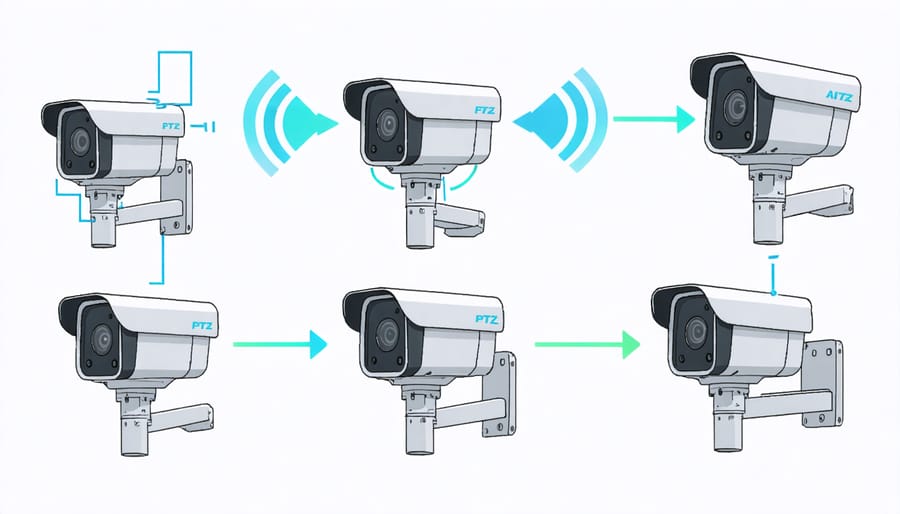
Real-World Applications
Event Photography and Videography
Event photography and videography have been transformed by AI tracking capabilities, making PTZ cameras invaluable tools for capturing dynamic moments. At weddings, these cameras excel at following the bride and groom throughout their special day, from walking down the aisle to their first dance, ensuring no precious moment is missed.
In sports photography, auto-tracking PTZ cameras have become game-changers, literally. They can follow athletes across the field, court, or track without missing a beat, maintaining sharp focus even during high-speed action sequences. Whether it’s a soccer striker sprinting toward goal or a basketball player weaving through defenders, these cameras keep the subject perfectly framed.
Live events present unique challenges that PTZ cameras handle with remarkable efficiency. During concerts, the camera can smoothly transition between performers on stage, while at conferences, it can track speakers as they move across the presentation area. The ability to preset multiple positions allows operators to quickly switch between different angles and subjects, creating more engaging content.
What makes these cameras particularly valuable is their ability to operate with minimal human intervention. A single operator can control multiple PTZ cameras simultaneously, making them cost-effective for event coverage. The intelligent tracking system can distinguish between multiple subjects, maintaining focus on the primary subject even in crowded scenes.
For event professionals, this technology means more reliable coverage, reduced staffing needs, and the ability to capture angles that might be challenging or impossible with traditional camera setups. The result is more dynamic, professional-looking content that meets the high standards expected in modern event documentation.
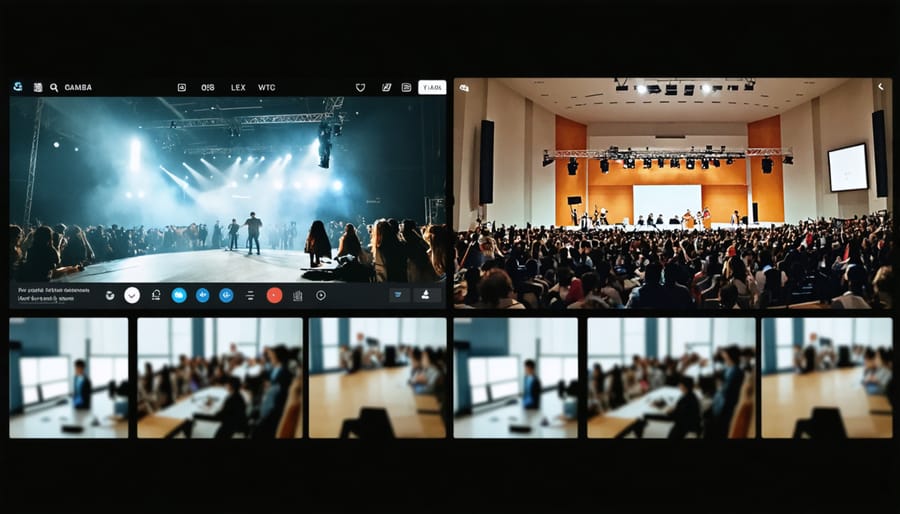
Security and Surveillance
AI auto-tracking PTZ cameras have revolutionized security and surveillance by combining intelligent monitoring with automated response capabilities. These smart systems excel at maintaining continuous observation without human intervention, making them invaluable for both commercial and residential security applications.
The AI-powered tracking ensures that once a subject enters the camera’s field of view, it remains in focus and within frame, even as it moves through the monitored area. This is particularly useful in retail environments, where the camera can follow suspicious activity while security personnel responds, or in warehouse settings where it can monitor worker safety and operational compliance.
One of the most significant advantages is the camera’s ability to distinguish between relevant and irrelevant motion. Unlike traditional motion detection systems that might trigger for passing cars or swaying trees, AI-enabled PTZ cameras can identify and track specific objects of interest, such as people or vehicles, while ignoring non-threatening movement.
The integration of facial recognition and object detection algorithms further enhances security capabilities. These cameras can maintain watchlists of authorized personnel, flag unknown individuals, and even detect abandoned objects or unusual behavior patterns. When connected to a central security system, they can trigger automated responses such as alerts, recordings, or lockdown procedures.
For perimeter security, these cameras excel at following potential intruders across large areas, maintaining visual contact while automatically adjusting zoom levels for optimal clarity. The continuous tracking capability ensures no blind spots or gaps in surveillance coverage, providing comprehensive security monitoring that would be impossible with traditional fixed cameras or manual PTZ operation.
Key Features to Consider
Tracking Accuracy and Speed
The tracking accuracy and speed of AI auto-tracking PTZ cameras depend on several key factors that work together to deliver optimal performance. Lighting conditions play a crucial role – while modern AI cameras perform well in various lighting situations, bright and consistent lighting typically yields the best tracking results. The camera’s sensor quality and resolution also significantly impact its ability to maintain precise tracking, especially when subjects are moving quickly or in challenging environments.
Processing power is another critical factor. Cameras with more powerful processors can analyze scenes faster, resulting in smoother tracking and fewer delays between detection and movement. The quality of the PTZ mechanism itself matters too – higher-end motors provide more precise movements and faster response times, essential for maintaining lock on fast-moving subjects.
The sophistication of the AI algorithm makes a substantial difference in tracking performance. Advanced algorithms can better predict movement patterns, distinguish between multiple subjects, and maintain tracking even when subjects are partially obscured. Environmental factors such as distance from the subject, background complexity, and potential obstacles can affect tracking reliability.
For optimal results, it’s important to consider the camera’s field of view and zoom range. A wider field of view helps maintain tracking when subjects move unpredictably, while optical zoom capability ensures detailed capture at various distances without compromising tracking accuracy.
Resolution and Zoom Capabilities
When it comes to image quality considerations, AI auto-tracking PTZ cameras typically offer resolutions ranging from Full HD (1080p) to 4K UHD. The higher resolution becomes particularly important when you’re zooming in on subjects, as it helps maintain clarity and detail even at extended distances.
Most professional-grade PTZ cameras feature optical zoom capabilities between 20x and 30x, though some models can reach up to 60x zoom. This impressive range allows you to capture clear footage of subjects both near and far without compromising image quality. Remember that optical zoom, which uses the lens’s physical movement, always produces better results than digital zoom.
The combination of high resolution and powerful zoom creates interesting dynamics for auto-tracking. At wider angles, the camera can track multiple subjects across a larger field of view, perfect for lecture halls or performance spaces. When zoomed in, the AI maintains focus on individual subjects with remarkable precision, though the field of view naturally becomes narrower.
For optimal performance, consider the lighting conditions in your space. Higher resolutions require more light for clean, noise-free images, especially when zooming. Many modern PTZ cameras include features like Wide Dynamic Range (WDR) and low-light compensation to help maintain image quality across various lighting scenarios.
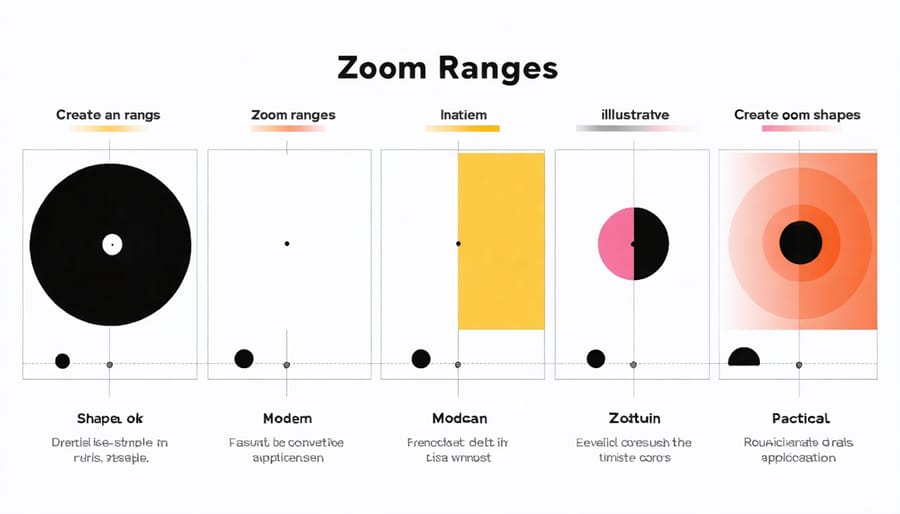
Common Challenges and Solutions
While AI auto-tracking PTZ cameras offer impressive capabilities, users often encounter several common challenges. Understanding these issues and their solutions can help you get the most out of your equipment.
One frequent challenge is inconsistent tracking in low-light conditions. When lighting is poor, the AI may struggle to maintain a lock on the subject. To address this, ensure adequate lighting in your space and consider using IR illuminators for night operation. Additionally, adjusting the camera’s sensitivity settings can help improve tracking performance in challenging lighting situations.
Another issue users face is false tracking, where the camera locks onto unintended objects or loses the intended subject in busy environments. This typically occurs in areas with multiple moving objects or reflective surfaces. The solution involves fine-tuning the tracking sensitivity and setting appropriate tracking zones to focus on specific areas of interest.
Network connectivity problems can also impact performance, especially in wireless setups. Delayed movements or jerky tracking often indicate bandwidth limitations or network instability. To resolve this, ensure your network infrastructure can handle the camera’s data requirements and consider using a dedicated network for your camera system.
Some users report difficulties with smooth tracking during rapid subject movements. This can result in the camera losing track or making jarring movements to catch up. Adjusting the PTZ speed settings and implementing proper preset positions can help create more fluid tracking movements.
Battery life can be a concern for portable setups. The continuous movement and AI processing consume significant power. Using power-saving modes when appropriate and investing in high-capacity batteries or reliable power supplies can help maintain consistent operation.
Calibration issues may arise after extended use or environmental changes. Regular maintenance, including periodic recalibration and firmware updates, helps ensure optimal performance and tracking accuracy. Keep a maintenance schedule and document any adjustments that work well for your specific setup.
AI auto-tracking PTZ cameras represent a significant leap forward in surveillance and content creation technology, combining the versatility of traditional PTZ cameras with the intelligence of artificial intelligence. These innovative devices have transformed how we approach video recording, live streaming, and security monitoring, offering unprecedented levels of automation and accuracy.
The benefits of these systems are clear: hands-free operation, consistent subject tracking, reduced manual intervention, and improved capture quality. Whether you’re a content creator looking to streamline your production workflow, a security professional seeking more reliable surveillance solutions, or an educator wanting to enhance distance learning capabilities, AI auto-tracking PTZ cameras offer compelling advantages over conventional camera systems.
Looking ahead, the future of AI auto-tracking PTZ technology appears incredibly promising. As artificial intelligence continues to evolve, we can expect to see even more sophisticated tracking algorithms, improved low-light performance, and enhanced multi-subject tracking capabilities. The integration of advanced features like gesture recognition, facial identification, and predictive movement analysis will likely become standard offerings.
Moreover, as these systems become more accessible and affordable, their adoption across various sectors will continue to grow. From small businesses to large enterprises, from churches to educational institutions, the applications for this technology are virtually limitless. The ongoing development of more intuitive interfaces and cloud-based capabilities will further enhance their utility and ease of use.
For those considering investing in an AI auto-tracking PTZ camera, the time has never been better. The technology has matured to a point where it offers reliable performance while continuing to evolve with exciting new capabilities on the horizon.
